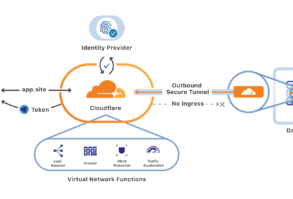Google rewards two hackers with $22k for discovering vulnerabilities in several cloud-based initiatives
The tech giant made six disbursements for glitches found in Theia, Vertex AI, Compute Engine, and Cloud Workstations.
Security flaws discovered in four projects on the Google Cloud Platform (GCP) have led to two security experts bagging over $22,000 in rewards for identifying bugs.
The most profitable endeavor for the hacker team of Sreeram KL and Sivanesh Ashok was the machine learning implementation and training platform named Vertex AI. This venture resulted in two separate rewards of $5,000 each, thanks to their identification of a server-side request forgery (SSRF) bug and the successful bypass of the subsequent fix.
In a blog post penned by Sreeram, he detailed a vulnerability found within Vertex AI’s workbench function. This feature allows for the development of Jupyter notebook-based environments in the cloud.
Exploiting the SSRF flaw and tricking individuals into accessing a harmful link, invaders have the potential to take over an authorization token. Following this, they could gain control over all the projects of the victim on GCP, as shown in the subsequent video.
Server Side Request Forgery (SSRF) glitch
The investigators stumbled upon a web address that appeared to have potential for SSRF vulnerability. On trying to access the original web address, they received a response that echoed the outcome of a verified request dispatched to compute.googleapis.com, shared Sreeram. Drawing from his past encounters, he knew that these endpoints deploy the authorization header for credentials verification.
Fuzzing revealed a URL – https://{INSTANCE-ID}-dot-us-central1.notebooks.googleusercontent.com/aipn/v2/proxy/{attacker.com}/compute.googleapis.com/ – which managed to slip past this scrutiny, as mentioned by Sreeram. “Additionally, the susceptible endpoint was a GET request without any CSRF (Cross-Site Request Forgery) safeguards, which is fairly typical,” Sreeram added.
You may also find it interesting that the US government has declared the third edition of the Hack The
When it comes to identifying potential targets for cyberattacks, it’s often quite easy to discover a victim’s subdomain. This is largely because subdomains are frequently revealed to multiple third-party domains – take github.com as an example – typically through referer in the overall application process.
Google resolved the problem by incorporating cross-site request forgery (CSRF) safeguards to the GET endpoints and enhancing the validation process of the domain.
Bypassing the patch
Yet, after the solution was implemented, Sreeram and Ashok observed that altering compute.googleapis.com to something.google.com didn’t provoke the same error as it earlier did.
They deduced that bypassing the solution required an open redirection in *.google.com.
The team had to rule out JavaScript-based redirections because the server couldn’t interpret the language. Instead, they decided to use Google’s web feed management service, FeedBurner. The researchers discovered that if a user disables the proxy, the service will reroute URLs to their own domain, bypassing their RSS feed instead.
The hacking attack ended with a successful circumvention of CSRF security, using a method created in 2020 by ‘@s1r1us’ aimed at Jupyter Lab.
The second solution entailed discontinuing support for *.google.com as a proxy URL.
“Upon discovering this problem, we understood more about the operations of managed GCP products. This knowledge assisted us in identifying additional glitches in GCP,” Sreeram shared with The Daily Swig.
Sreeram revealed in another blog post that bugs were found in Theia’s workbench feature. This is an integrated development environment (IDE) that Google employs in its Cloud Shell.
In layman’s terms, the two researchers managed to hack into the whole project because the user-controlled instances were utilizing the project’s standard compute engine service account. They did this by taking advantage of a recognized XSS vulnerability (CVE-2021-41038) to obtain the service account token from the metadata server. This clever maneuver netted them an additional reward of $3133.70.
Stay updated with the most recent developments in bug bounty news.
The initial security vulnerability discovered in GCP, as detailed by Ashok, was a problem with SSH key injection in Google Cloud’s Compute Engine.
Earning a substantial profit of $5,000 from a $1,000 reward incentive, the weak spot existed in the browser-based SSH function. This flaw could potentially facilitate the performance of remote code (RCE) within a victim’s Compute Engine instance, as exemplified in the demonstration video shown above.
The experts additionally bagged another $3,133.70 for discovering an authorization loophole in Cloud Workstations, a platform offering fully supervised development settings for security-focused businesses. Ashok detailed this discovery in a fourth blog entry.
The duo managed to accumulate a sum of $22,267 from six distinct bug bounty rewards.






